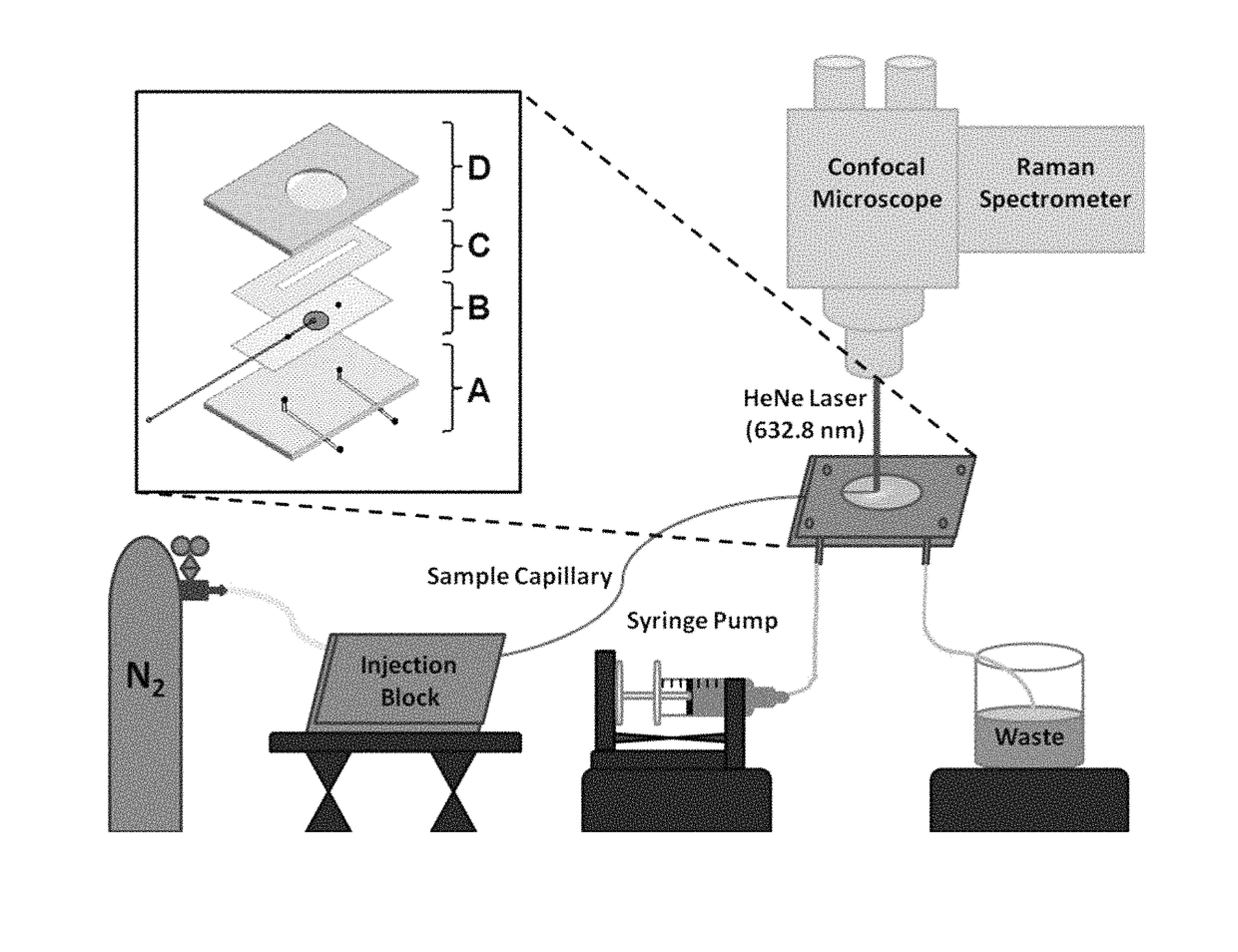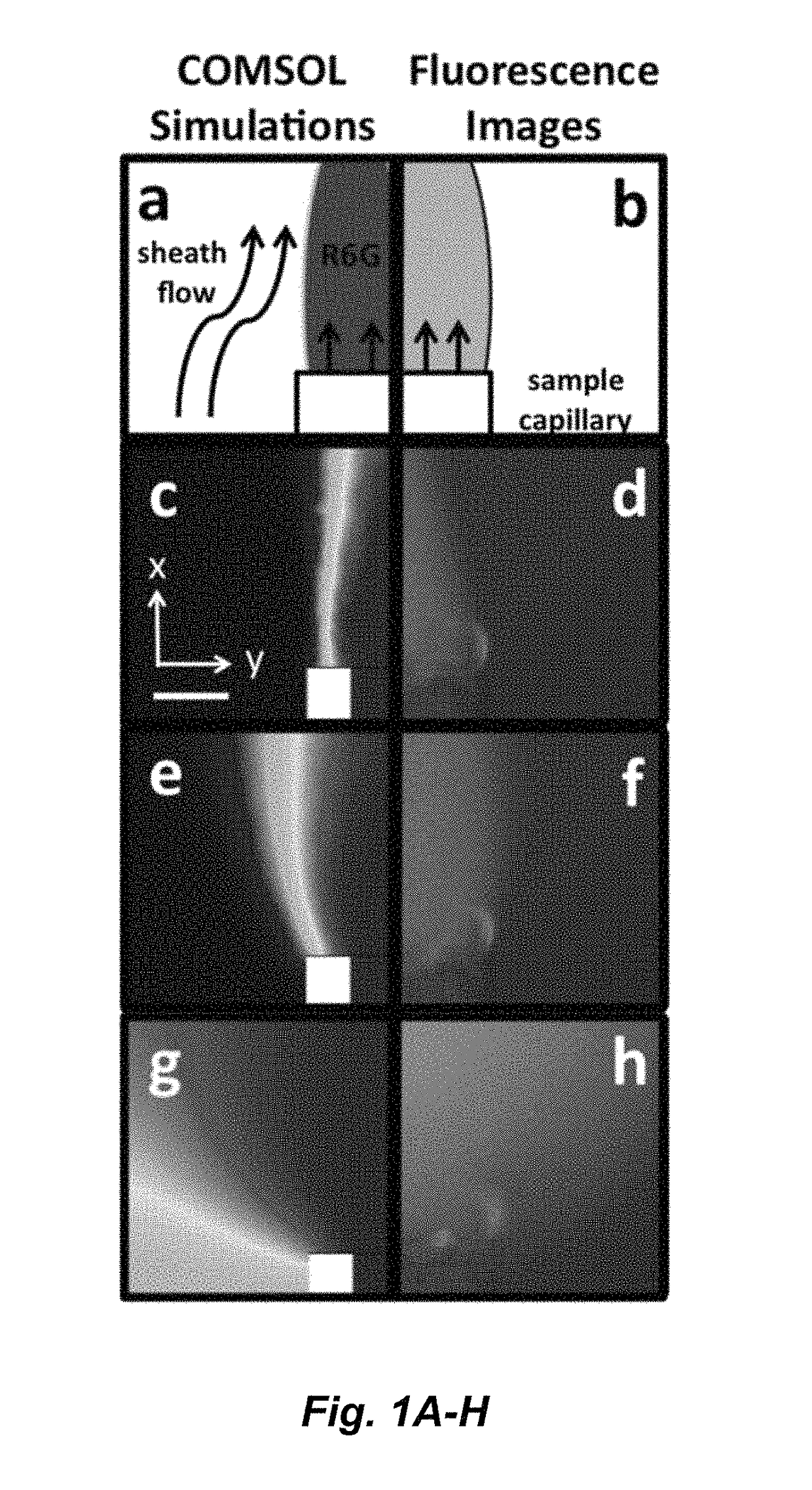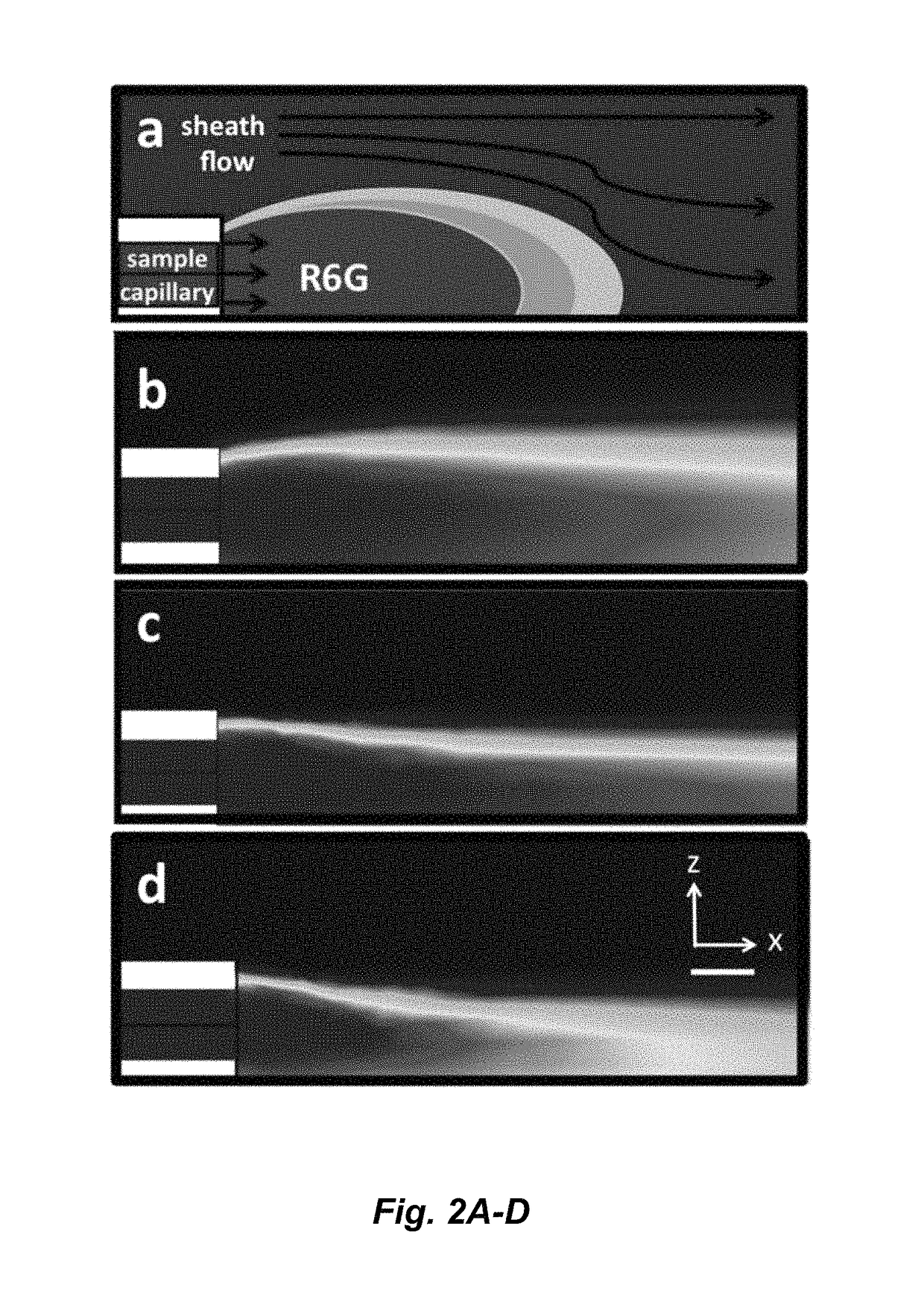Ultrasensitive SERS flow detector
a detector and ultra-sensitive technology, applied in the field of ultra-sensitive sers flow detectors, can solve the problems of limited sensitivity, lack of chemical affinity for the target analyte, and difficulty in high-sensitivity sers detection in flow
- Summary
- Abstract
- Description
- Claims
- Application Information
AI Technical Summary
Benefits of technology
Problems solved by technology
Method used
Image
Examples
example 1
Ultrasensitive SERS Flow Detector and Methods of Use
[0091]Material and Reagents. Rhodamine 6G (R6G, ˜95%) was purchased from Sigma-Aldrich (St. Louis, Mo.). Ultrapure water (18.2 MΩcm) was obtained from a Barnstead Nanopure filtration system. All other chemicals were of analytical grade and used without any further purification.
[0092]Substrate Preparation. SERS-active substrates were fabricated by a previously reported thermal evaporation procedure (Asiala and Schultz, Analyst 2011, 136. 4472-4479). These substrates were incorporated into a custom-built flow cell by affixing individual substrates onto a standard microscope slide with two 3 mm diameter holes predrilled 35 mm along the center of the slide. Prior to its use, the SERS substrate on the glass slide was soaked overnight in 0.1 M NaOH (Sigma-Aldrich, 99.99%) to dissolve the anodized aluminum oxide (AAO) filter. The resulting SERS-active substrate was thoroughly rinsed with ethanol (Sigma-Aldrich, 99.5%) followed by a final ...
example 2
SERS Substrate Fabrication, Components, and Experimental Details
[0099]This example contains additional experimental details including the SERS substrate fabrication, the technical components used in the Raman microscope, and the data analysis procedures. FIG. 7 depicts the experimental setup as described in the text. FIG. 8 shows the calculated samples thickness as a function of increasing sheath flow rate. FIGS. 9A and 9B show the experimental and calculated effects, respectively, of flow rate on the SERS response observed without hydrodynamic focusing.
[0100]Experimental Methods.
[0101]Substrate Preparation. Silver (Ag, Sigma-Aldrich, 99.999%) was vapor deposited onto a commercial anodized aluminum oxide filter (Anodisc 13, Whatman) with 0.1 μm pores at a constant rate of 1.0-1.5 Å / s until a quartz crystal microbalance (QCM) registered a final nominal thickness of 500 nm. Prior to deposition, the Anodisc filters were cleaned for 5 minutes in an Ar+ plasma using a plasma cleaner (Mod...
example 3
Ultrasensitive Online SERS Detection of Structural Isomers Separated by Capillary Zone Electrophoresis
[0107]A mixture of structural isomers was separated and identified at nanomolar concentrations (˜100,000 molecules) by incorporating capillary zone electrophoresis (CZE) with a sheath flow surface-enhanced Raman scattering (SERS) detector. Baseline resolution was obtained from three structural isomers of rhodamine using a planar silver SERS substrate, demonstrating the utility of this approach for trace chemical analysis.
[0108]The ability to identify and characterize molecules purified through separation lies at the heart of chemical analysis. For column-based separations, common methods of detection include UV-visible absorption, laser-induced fluorescence (LIF), and mass spectrometry. Despite its low cost and flexibility, on-column UV-visible absorption suffers from poor molecular specificity and a lack of sensitivity. On the other hand, LIF offers a high degree of sensitivity but...
PUM
| Property | Measurement | Unit |
|---|---|---|
| outer diameter | aaaaa | aaaaa |
| outer diameter | aaaaa | aaaaa |
| inner diameter | aaaaa | aaaaa |
Abstract
Description
Claims
Application Information
 Login to View More
Login to View More - R&D
- Intellectual Property
- Life Sciences
- Materials
- Tech Scout
- Unparalleled Data Quality
- Higher Quality Content
- 60% Fewer Hallucinations
Browse by: Latest US Patents, China's latest patents, Technical Efficacy Thesaurus, Application Domain, Technology Topic, Popular Technical Reports.
© 2025 PatSnap. All rights reserved.Legal|Privacy policy|Modern Slavery Act Transparency Statement|Sitemap|About US| Contact US: help@patsnap.com



